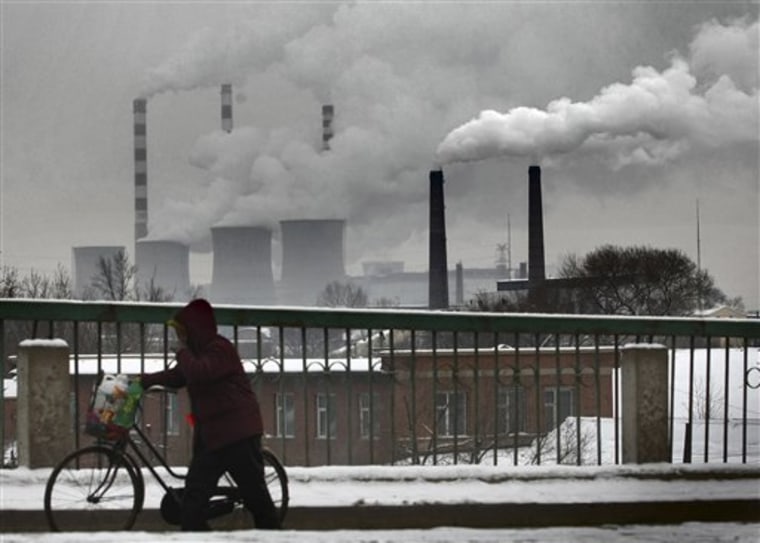Ozone blowing over from Asia is raising background levels of a major ingredient of smog in the skies over California, Oregon, Washington and other Western states, according to a new study appearing in Thursday's edition of the journal Nature.
The amounts are small and, so far, only found in a region of the atmosphere known as the free troposphere, at an altitude of two to five miles, but the development could complicate U.S. efforts to control air pollution.
Though the levels are small, they have been steadily rising since 1995, and probably longer, said lead author Owen Cooper, a research scientist at the University of Colorado attached to the National Oceanic and Atmospheric Administration's Earth System Research Laboratory in Boulder, Colo.
"The important aspect of this study for North America is that we have a strong indication that baseline ozone is increasing," said Cooper. "We still don't know how much is coming down to the surface. If the surface ozone is increasing along with the free tropospheric ozone, that could make it more difficult for the U.S. to meet its ozone air quality standard."
The study is the first link between atmospheric ozone over the U.S. and Asian pollution, said Dan Jaffe, a University of Washington-Bothell professor of atmospheric and environmental chemistry.
He contributed data from his observatory on top of Mount Bachelor in Oregon to the study.
EPA working with China
The U.S. Environmental Protection Agency is considering lowering the current limit on ozone in the atmosphere by as much as 20 percent, and has been working with China to lower its emissions of the chemicals that turn into ozone.
Ozone is harmful to people's respiratory systems and plants. It is created when compounds produced by burning fossil fuels are hit by sunlight and break down. Ozone also contributes to the greenhouse effect, ranking behind carbon dioxide and methane in importance.
Ozone is only one of many pollutants from Asia that reach the United States. Instruments regularly detect mercury, soot, and cancer-causing PCBs.
Jaffe said it was logical to conclude that the increasing ozone was the result of burning more coal and oil as part of the Asia's booming economic growth.
The next step is to track the amounts of Asian ozone reaching ground levels on the West Coast, said Cooper.
Work will start in May and end in June, when air currents produce the greatest amounts of Asian ozone detected in the U.S. Weather balloons and research aircraft will be launched daily to measure ozone closer to ground, where it affects the air people breathe, Cooper said.
14 years of samples
The study looked at thousands of air samples collected between 1995 and 2008 and found a 14 percent increase in the amount of background ozone at middle altitudes in springtime. When data from 1984 were factored in, the rate of increase was similar, and the overall increase was 29 percent.
When ozone from local sources was removed from the data, the trend became stronger, Cooper said. Using a computer model based on weather patterns, the ozone was traced back to southeastern Asia, including the countries of India, China, Vietnam, Laos and Cambodia.
The ozone increases were strongest when winds prevailed from southeastern Asian, Cooper said.
In a commentary also published in Nature, atmospheric chemist Kathy Law of Universite de Paris in France said the study was "the most conclusive evidence so far" of increasing ozone over the Western United States.
Law noted that natural sources of ozone could contribute to the increases, and there were limitations to the computer model used to trace the sources of the increases, but the study remained a "vital benchmark" that could be used to test climate change models, which have been unable to reproduce increases in ozone.
